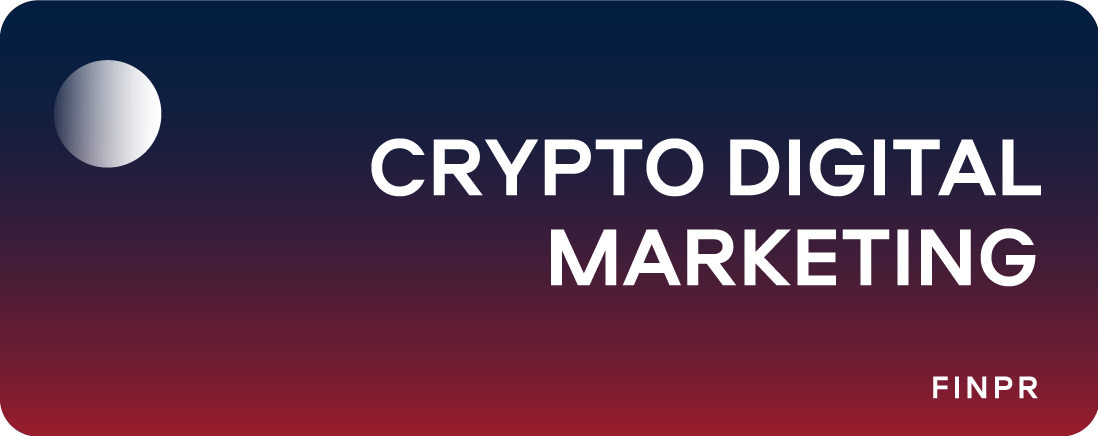
Nowadays, crypto digital marketing has become the cornerstone of success for blockchain projects. This article dives into the innovative strategies, trends, and tactics that are reshaping how cryptocurrency projects engage with their audiences and stand out in an ever-evolving market.
Fundamentals of Digital Marketing
Digital marketing is the strategic use of digital channels and technologies to connect with consumers, build brand awareness, and drive business growth. Unlike traditional marketing, it leverages interactive platforms to target specific audiences, measure campaign performance in real time, and adjust tactics based on data.
1. Core Components
Search Engine Optimization (SEO)

SEO is the process of optimizing website content and structure to rank higher in search engine results. This involves keyword research, on-page optimization (e.g., meta tags, headings, content quality), off-page strategies like link building, and technical SEO improvements. Effective SEO increases organic visibility and drives qualified traffic to your site.
Content Marketing
Content marketing focuses on creating and distributing valuable, relevant, and consistent content to attract and retain a clearly defined audience. Whether through blogs, videos, podcasts, or infographics, high-quality content educates and nurtures prospects while establishing the brand as a trusted authority in its field.
Social Media Marketing
Social media platforms like Facebook, Instagram, Twitter, LinkedIn, and TikTok provide dynamic channels to engage with audiences directly. By sharing tailored content, running paid ads, and fostering community interactions, businesses can build brand loyalty and drive traffic while obtaining immediate feedback from customers.
Email Marketing
Email marketing remains one of the most cost-effective digital channels. It involves sending personalized messages, promotions, and newsletters to segmented lists. With robust automation and A/B testing capabilities, email campaigns can generate high returns on investment by nurturing leads and encouraging repeat business.
Paid Advertising (PPC)
Pay-per-click advertising allows businesses to bid for ad space on search engines and social media platforms. With PPC, you only pay when a user clicks on your ad, making it a highly measurable method for driving targeted traffic. PPC campaigns — when optimized with compelling ad copy and relevant landing pages — can deliver immediate results while complementing organic efforts.
2. Data-Driven Decisions and Analytics
One of digital marketing’s greatest strengths is its measurability. Tools like Google Analytics, social media insights, and email performance metrics provide real-time data on consumer behavior, campaign effectiveness, and overall ROI. By continuously monitoring these metrics, marketers can refine their strategies, optimize content, and allocate budgets more effectively, ensuring every dollar spent drives maximum impact.
3. Customer Targeting and Personalization
Successful digital marketing is built on a deep understanding of your audience. Using segmentation, customer personas, and behavioral data, you can craft highly personalized messages that resonate with specific groups. Tailored campaigns that speak directly to the needs, interests, and pain points of your target market are more likely to drive engagement and conversion.
4. Integration and Omnichannel Strategies
In today’s digital landscape, a cohesive approach across multiple channels is essential. Integrating SEO, content, social media, email, and paid advertising into an omnichannel strategy ensures that your message is consistent and reinforces your brand at every touchpoint. This holistic view enables seamless customer journeys and improves the overall effectiveness of your marketing campaigns.
Content Marketing Strategies for Crypto
In an ecosystem as dynamic and fast-evolving as cryptocurrency, content marketing is a critical tool for educating potential users, building trust, and differentiating projects in a crowded market. Unlike traditional markets, the crypto space demands clear, transparent, and technically sound messaging that both demystifies complex blockchain concepts and highlights a project's unique value proposition.
1. Understand and Segment Your Audience
Start by deeply analyzing your target audience. Crypto enthusiasts vary widely—from complete beginners and retail investors to seasoned traders and blockchain developers. Tailor your content to address each segment’s specific needs and pain points.
Tip: Use analytics tools and community feedback (via forums and social media) to refine your customer personas and adjust your messaging accordingly.
2. Create Educational and Value-Driven Content
Educational content is at the heart of crypto content marketing. Since blockchain and crypto terms can be intimidating, producing content that simplifies complex topics is key.
- Blog Posts & Articles: Write how-to guides, explainers, and market analysis pieces that break down technical concepts into layman’s terms.
- Whitepapers & Case Studies: Develop in-depth resources that detail your project’s technology, tokenomics, and real-world applications.
- Infographics & Visual Content: Use visual aids to explain processes (e.g., how a blockchain transaction works) in a clear, shareable format.
3. Diversify Content Formats
Leverage a mix of content types to reach your audience across multiple touchpoints:
- Videos & Webinars: Create engaging explainer videos or live Q&A sessions (AMAs) to build a personal connection and clarify complex topics.
- Podcasts: Host or participate in podcasts discussing market trends and project updates to reach audiences on the go.
- Interactive Content: Use quizzes, polls, and interactive guides to foster engagement and community participation.
4. Optimize Content for SEO and Discoverability
Effective SEO ensures that your content reaches those actively searching for crypto-related insights:
- Keyword Research: Identify and target both broad terms (e.g., “cryptocurrency basics”) and niche-specific queries (e.g., “DeFi lending protocols”).
- On-Page Optimization: Optimize meta tags, headings, and images, and interlink related articles to boost search rankings.
- Content Freshness: Update your content regularly to reflect the latest market trends and regulatory developments.
5. Amplify Distribution with Social Media and PR
Even the best content needs amplification:
- Social Media Sharing: Distribute your content through platforms like Twitter, Reddit, and Telegram where crypto communities actively engage.
- Influencer Collaborations: Partner with crypto influencers to co-create content or share your content with their followers, adding credibility and expanding reach.
- PR Outreach: Combine your content marketing efforts with press releases and media features to build authority and visibility in reputable crypto news outlets.
Social Media Marketing in the Crypto Space

Social media has become a cornerstone for crypto projects looking to build communities, establish credibility, and drive rapid user engagement. In an industry where market sentiment shifts quickly and trust is paramount, crypto marketers must leverage social platforms to both inform and interact with their target audience.
Choosing the Right Platforms
Crypto enthusiasts are active on several key channels:
- Twitter (X): A hub for real-time updates, trending news, and industry debates. Projects can share announcements, engage in live discussions (e.g., Twitter Spaces), and use trending hashtags to increase reach.
- Telegram and Discord: Essential for fostering close-knit communities, these platforms allow direct interaction with investors and users through group chats, AMAs (Ask Me Anything) sessions, and regular updates.
- Reddit: With communities such as /r/CryptoCurrency and /r/Bitcoin, Reddit offers a space for in-depth discussions, market analysis, and peer-to-peer advice.
These platforms offer unique advantages — Twitter’s speed and reach, Telegram and Discord’s community focus, and Reddit’s in-depth conversations — which can be strategically combined to cover different aspects of a crypto marketing campaign.
Best Practices for Engagement
To succeed in the fast-paced crypto landscape, your social media strategy should focus on:
- Consistent and Transparent Communication: Regularly share project updates, technical insights, and market news. Consistency builds trust, while transparency in sharing progress or challenges reassures the community.
- Interactive Content: Engage users with Q&A sessions, live streams, polls, and interactive threads. Real-time interactions (e.g., AMAs on Telegram or Twitter Spaces) help to humanize the project and encourage community feedback.
- Leveraging Visuals and Memes: Crypto culture thrives on creative visuals. High-quality graphics, infographics, and memes can simplify complex concepts and make content more shareable.
- Influencer and KOL Partnerships: Collaborate with crypto influencers who have established credibility. Their endorsements can boost your project’s reputation and expand your audience organically.
- Hashtag and Trend Usage: Use industry-specific hashtags (e.g., #CryptoNews, #DeFi, #NFTs) to increase discoverability and join broader conversations within the crypto community.
These practices help create a robust social media presence that not only increases visibility but also builds a loyal community that actively supports and advocates for your project.
Measurement and Adaptation
As social media dynamics change rapidly, it’s critical to:
- Track Engagement Metrics: Monitor likes, shares, comments, and follower growth using analytics tools native to each platform or third-party solutions.
- Analyze Sentiment: Regularly assess community sentiment to adjust messaging and strategy in response to market shifts.
- Iterate Your Approach: Use data insights to refine content types, posting frequency, and engagement tactics. This agile methodology ensures your social media efforts remain effective over time.
Effective measurement not only gauges the success of your current efforts but also informs future campaigns, helping you stay ahead in an ever-evolving crypto market.
Paid Advertising and Promotions
Paid advertising is a crucial lever in crypto marketing, enabling projects to gain rapid visibility, reach targeted audiences, and drive conversions even in a fast-moving market. Given the competitive and often volatile nature of the crypto space, strategic paid campaigns can help projects overcome the challenges of low organic reach while complementing broader community and content efforts.
Key Channels and Platforms
Crypto projects can leverage a mix of traditional digital advertising platforms alongside crypto-specific ad networks to maximize their reach:
- Search Engine Ads: Utilizing platforms like Google Ads allows crypto projects to target high-intent keywords (e.g., “best crypto exchange,” “how to buy Bitcoin”). This strategy can attract investors and new users who are actively searching for crypto solutions.
- Social Media Ads: Platforms such as Twitter (X), Facebook, and even LinkedIn offer robust targeting options. These platforms enable projects to promote content, announcements, and updates directly to niche crypto audiences.
- Crypto Ad Networks: Specialized networks (e.g., Blockchain-Ads, Coinzilla, or Cointraffic) provide targeted exposure within crypto communities by placing ads on websites, forums, and platforms dedicated to blockchain and cryptocurrency news.
- Display and Video Advertising: Visual campaigns—ranging from banner ads to video promotions—can be particularly effective in capturing the attention of crypto users. Well-produced visuals and explainer videos can simplify complex concepts and communicate your project’s value proposition quickly.
Best Practices for Campaign Success
To ensure your paid advertising efforts deliver optimal results, consider the following best practices:
- Precise Targeting: Use detailed audience segmentation based on demographics, interests, and behavior (e.g., users who frequently engage with crypto news or investment content). Advanced targeting options offered by both traditional and crypto-focused platforms help you reach those most likely to engage.
- Compelling Creatives: In a crowded market, high-quality visuals, clear messaging, and strong calls-to-action are critical. Tailor ad creatives to resonate with both novice and experienced crypto users, simplifying technical jargon where necessary.
- A/B Testing and Optimization: Continuously test different ad formats, copy variations, and visual elements to identify the highest-performing combinations. Use data insights to adjust your bidding strategies and creative assets for improved conversion rates.
- Budget Management: Allocate budgets wisely between various channels. For example, you might invest more heavily in crypto-specific networks during major project milestones (like token sales or exchange listings) while using search and social media ads for ongoing awareness.
- Compliance and Transparency: With regulatory scrutiny in the crypto space, ensure that all paid campaigns adhere to local regulations and platform policies. Clear disclosures and honest messaging are essential for maintaining credibility and user trust.
Conclusion
A well-rounded approach — encompassing content marketing, social media, and precise advertising — can upgrade your project from obscurity to industry leader. As you implement these strategies, remember that ongoing optimization and transparency are vital to building lasting credibility and trust among your audience.




